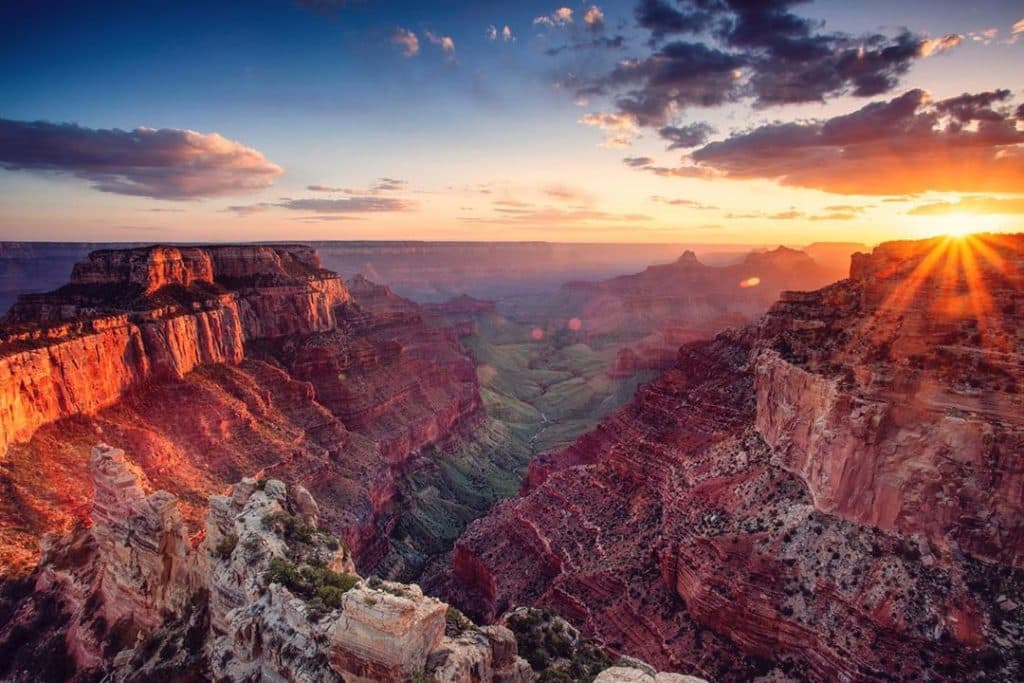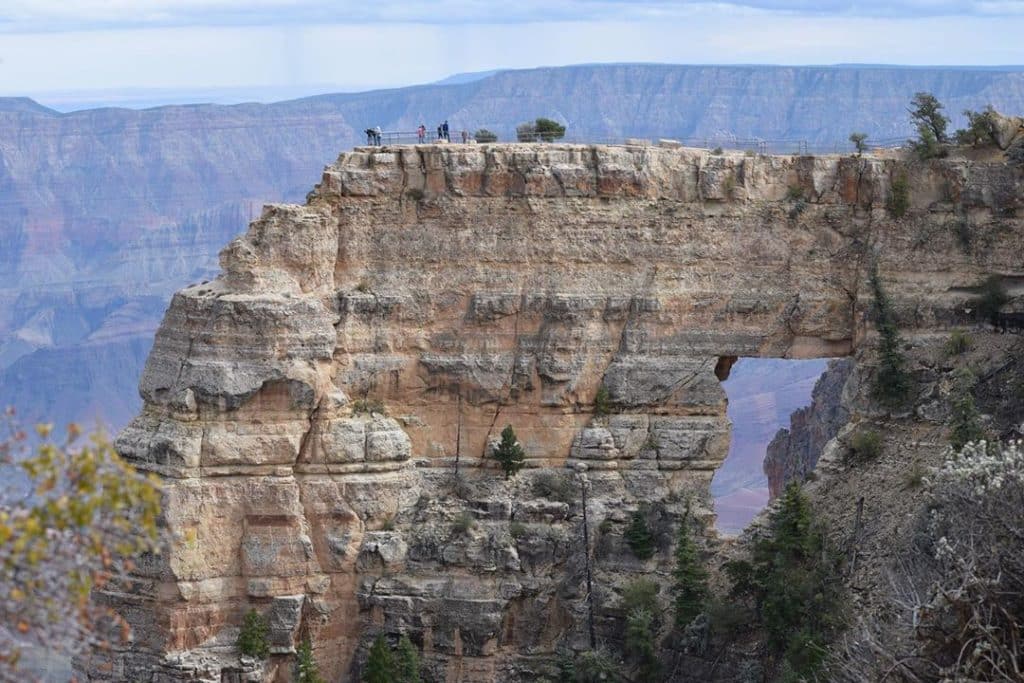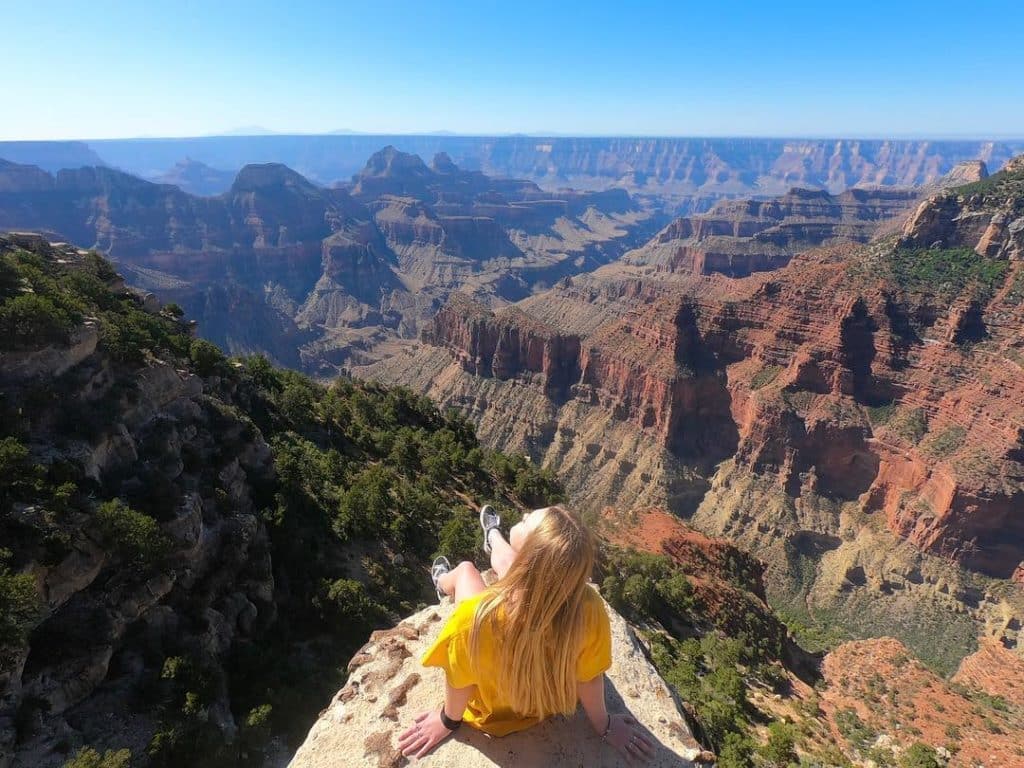I don’t like answering a question with more questions, but when friends ask me which rim of the Grand Canyon is better, well, I have no choice. Anyone who only has time to see one side of this enchanting land of fascinating shapes and colors, this sacred spot of shifting shadows and sculpted cliffs, well, I have to ask what they really want: a walk in the park or a deeper trek; an easy Insta post begging for some love or a collection of fabulous shots they have to earn?
Here’s a breakdown of the two sides of the Grand Canyon National Park: South Rim vs. North Rim.
The South Rim Offers More of Everything

For the majority of visitors, the South Rim is a much shorter drive than the North Rim. And coming from Phoenix or Los Angeles fewer hours in the car is a deal maker. There is a lot more at the South Rim, too: more lookout points, more trails, more national park ranger programs and a lot more visitor services.
It was a spur line built off the main Santa Fe tracks out of Flagstaff that really kickstarted tourism to one of Earth’s most gaping holes back in 1901. Here at the South Rim – where the Colorado River carved canyons more than a mile deep, where some of the oldest rocks on the planet are exposed – almost five million people a year arrive by small plane, bus, bike and car to gawk into one of the most powerful wonders of the world.
Most of the iconic Grand Canyon images you have likely seen were snapped at the South Rim, and fortunately many of those shots were taken at easily accessible spots. You might be bumper-to-bumper with humanity at Mather Point or nearby Yavapai Point but both vantage spots offer dramatic perspectives worth the bustle. The South Rim offers dozens of worthy vistas each with its own unique angle of nature’s masterpiece.
I could not imagine going to the Grand Canyon without going into the Grand Canyon. I get hiking might not be your thing, but would you go to Hawaii without going into the water, or go to Vegas without going into a casino? Even a couple hundred yards down the Bright Angel or South Kaibab Trail exponentially magnifies every canyon experience. For those with boots and a desire to descend further into a canyon that has been home to humans for 12,000 years, and has 450 species of birds, 91 types of mammals, and 1,747 different kinds of plants, that iPhone needs to be handy as you switchback your way through a kaleidoscope of terrain and breath robbing lookouts.
From pizza pubs to taco trucks, really fast to super slow, every type of dining option is available at the South Rim. As for putting your head on a pillow, well, you have campsites, cabins, motels and hotels from no stars to full galaxies calling . . . the South Rim almost feels glutinous with options.
So, if you don’t mind sharing the Grand Canyon – after all it is 270 miles long and up to 16 miles wide, so there is plenty of space – remember, you get more of everything at the South Rim, and it’s open year-round.
The Case for the North Rim

Those who go the extra mile(s) to the North Rim often make the decision after hearing one stat: it has 1/10 the number of visitors as the South Rim. If that isn’t convincing enough, knock off five to ten degrees in the summer from being a thousand feet higher than the South Rim.
The two rims are only 10 miles apart the way the hawk flies but a world apart in many other ways. Everything takes more effort at the North Rim as viewpoints are farther apart, trail options are limited and services are few, but really, that’s the charm. That thousand feet of elevation makes a significant difference in vegetation, too, as aspen, birch, and maple populate the North Rim and make Crayola quite envious every autumn.
At 8,803’ Point Imperial is not only significantly higher than any other Grand Canyon viewpoint, it also allows visitors to scan the horizon and see where rivers merge, the desert is painted and cliffs are vermillion.

There is only one trail from the North Rim into the Grand Canyon, but you don’t need to go all the way in to appreciate this place’s massive size and impact. Even the ¾ mile trek to Coconino Overlook showcases the beauty of the North Kaibab Trail. But carry on, if you will, to the Supai Tunnel, and eventually Roaring Springs, the source of all drinking water for visitors in the Grand Canyon.

Camping and lodging are limited at the North Rim, and the season varies but often lasts only from mid-May through Mid-October. Still, camp or get lucky enough to snag a reservation at the Grand Canyon Lodge, with its massive ponderosa pine beams, sloping roof and limestone façade, right at the edge of the Grand Canyon, and that will elevate the trip into the stratosphere.
North, South . . . it all depends on what you want. My answer is always both . . . and well, sometimes all three, as Grand Canyon West is now a viable option, too. Here, just a two-hour drive from Las Vegas, you can stand atop a U-shaped cantilevered glass bridge and see the Grand Canyon FOUR THOUSAND feet below! And wait, there’s also that helicopter trip over the canyon, that whitewater rafting trip through the canyon . . . so many ways, not enough days.
